Beatrice Dillon: “I feel that not knowing what you’re doing is better than mastering a piece of gear”
The UK producer tells us how she made one of the best electronic music albums of the year
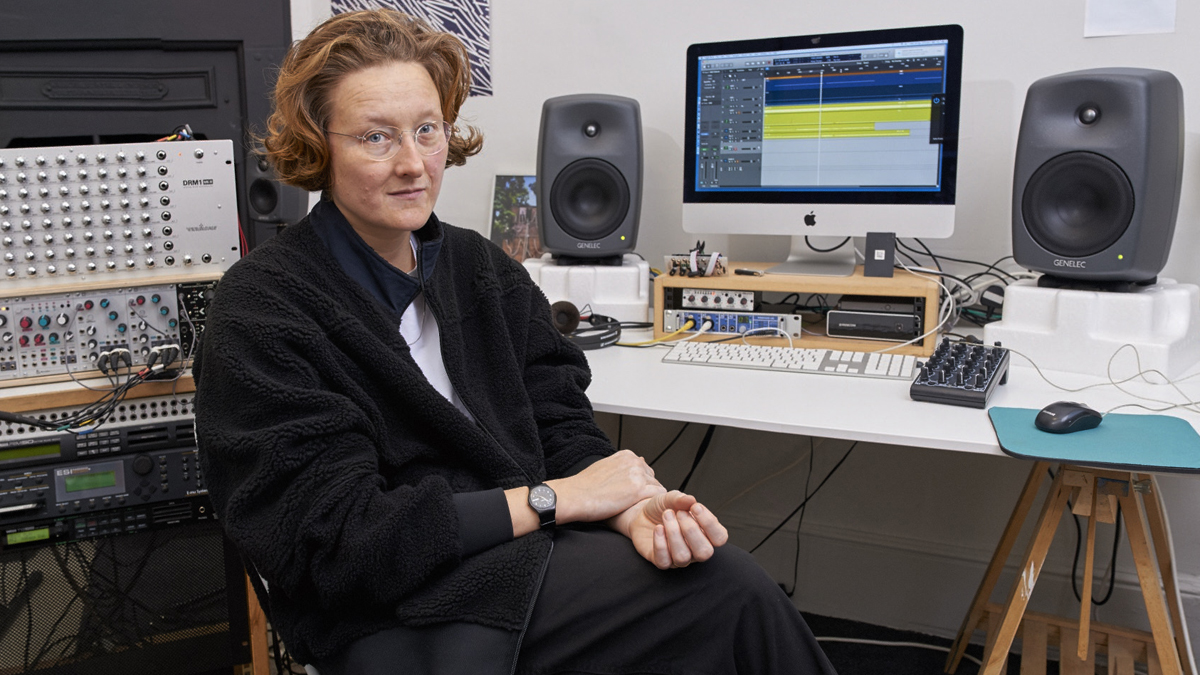
Exploring the cracks between bass, house and experimental music, Beatrice Dillon brings a distinctive approach to production.
Influenced by UK club music from her time spent working in record stores, the ambitious DJ/producer has a history of merging the organic and synthetic, creating rematerialised compositions for a number of sound art commissions.
“Once you understand how sampling works you think, hmm, maybe I don’t need to play an instrument. It opens you up to other things.”
The former NTS Radio DJ is currently resident at Somerset House Studios, where her small but focused studio belies the complexity of her solo debut LP, Workaround. A contender for experimental electronic album of the year, it shows Dillon’s inventive fusion of acoustic samples and groove-driven modular permutations - a breath of fresh air for the UK electronic scene.
Has your background in the visual arts informed your approach to music making?
“In terms of having a curiosity about art, sound design and film, it definitely all feeds in. I once mentioned that attending art school was a waste of time, but I didn’t mean that to be disrespectful to the college. It’s just that most people think that if you go to art school you’ll spend all day life drawing but, because art isn’t rooted in the traditional methods it was, it teaches you more about thinking, history and concepts than techniques. I really enjoyed that, but I wonder if that was a good use of my student loan.”
You worked as a BBC Radio 3 researcher…
“I started off doing internships at different radio programmes and worked for a production company that made jazz and world music for Radio 3. It was unpaid, but if you stuck around long enough jobs became available.”
Want all the hottest music and gear news, reviews, deals, features and more, direct to your inbox? Sign up here.
Sampling appears to be a strong tenet of your music-making discipline…
“I remember saving up to buy a Yamaha SU10 sampler when I was a teenager and plugging it into the record player. I didn’t really know what it was and couldn’t imagine there was a whole load of people doing this for a living – I just thought it was a good way to loop favourite bits of songs together.”
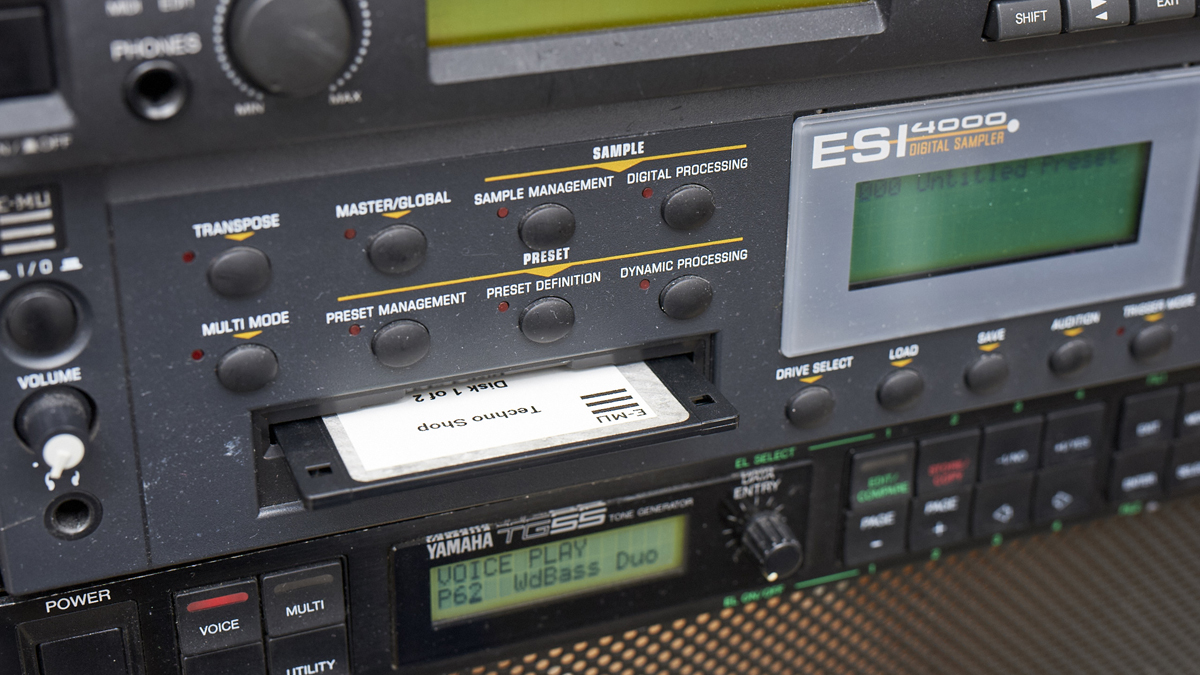
Something must have led your curiosity towards buying a sampler?
“It was quite an isolated decision and a bit of an anomaly. I probably didn’t even know what music software was, but once you understand how sampling works you think, hmm, maybe I don’t need to play an instrument. It opens you up to other things.
I was mad about the DJ Shadow album Endtroducing..... and thought it was the most incredible collage of sound. I had a grip of it coming from someone making a record from a record collection as opposed to a group of people in a room playing as a band.”
Your album Workaround is very progressive. It sounds like you have a novel approach to sound design?
“I tend not to learn how to use gear methodically; I’m actually a bit impatient. I learn gear up to a point, get bored and use something else, but I found learning how to use a computer to make music really liberating because I didn’t know what I was doing.
“From that point of view, I feel that not knowing what you’re doing is better than mastering a piece of gear. There’s this weird rumour about me that I‘ve had classical training, but I really haven’t. You can get programmed by technique and lose yourself. In terms of sounding progressive, labels like Hyperdub are really future-oriented, but I don’t have that urge to create something that sounds brand new, it’s just got to sound new to me.”
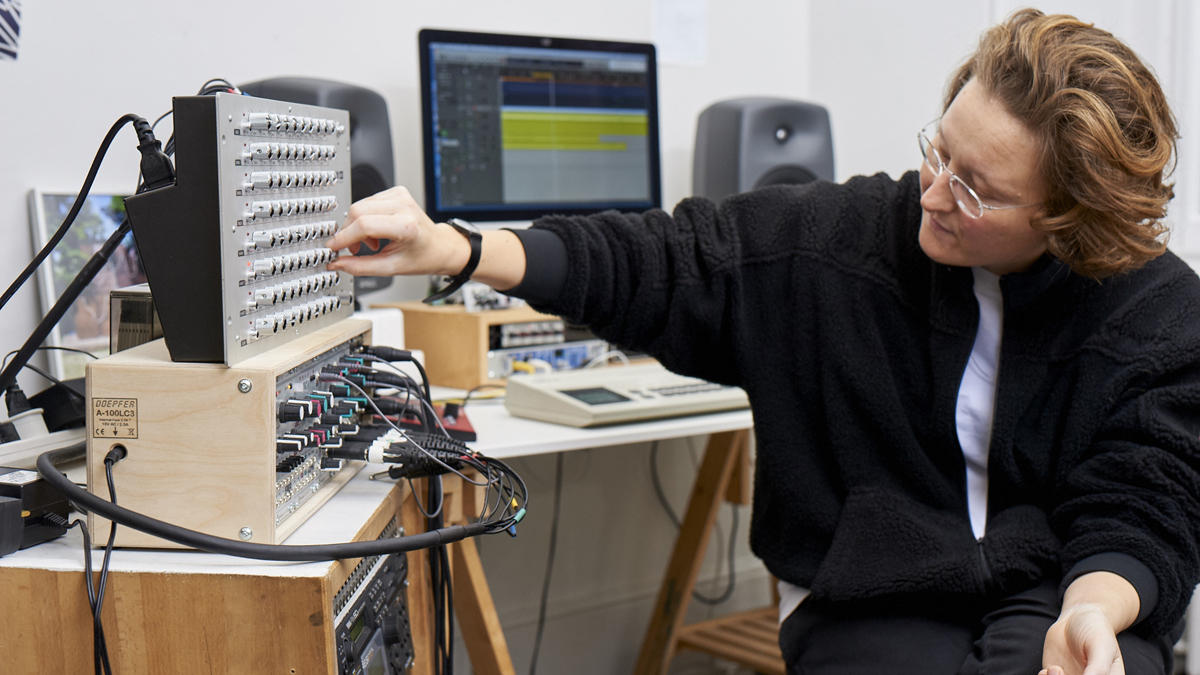
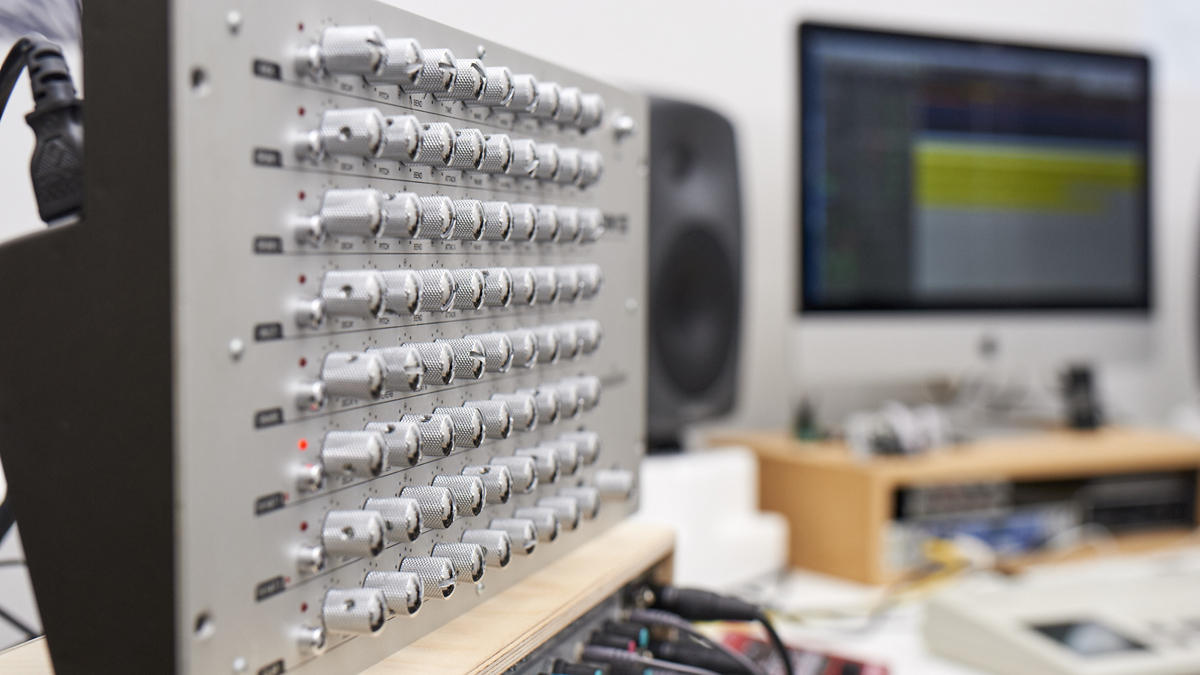
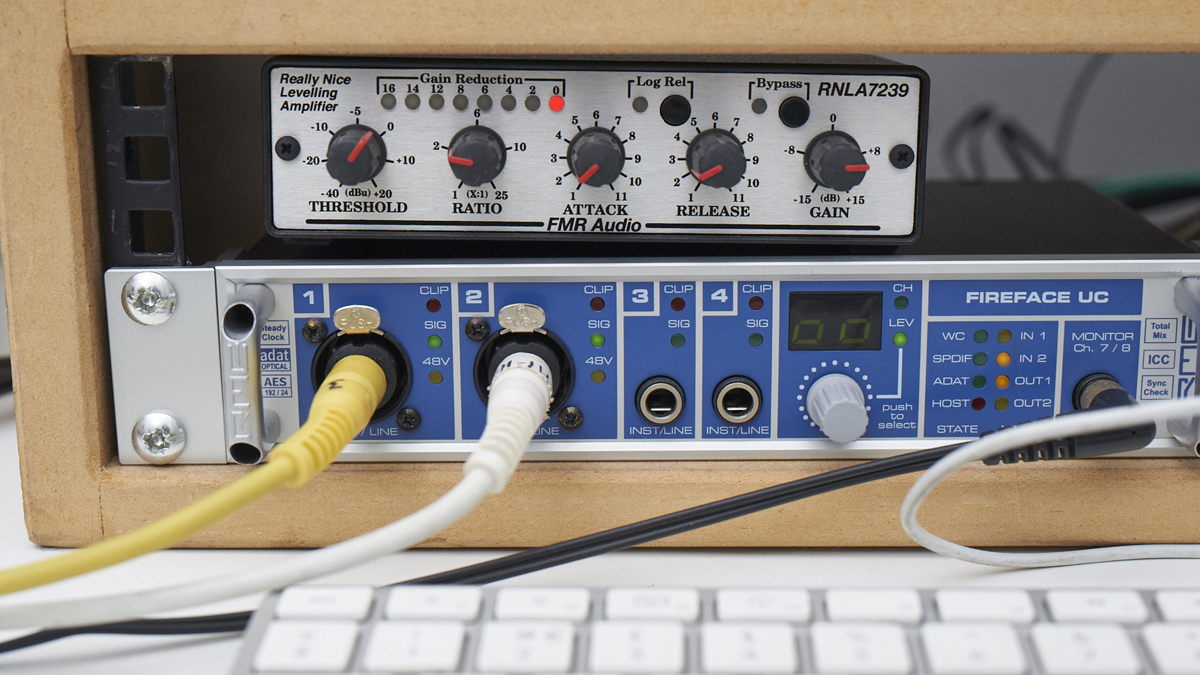
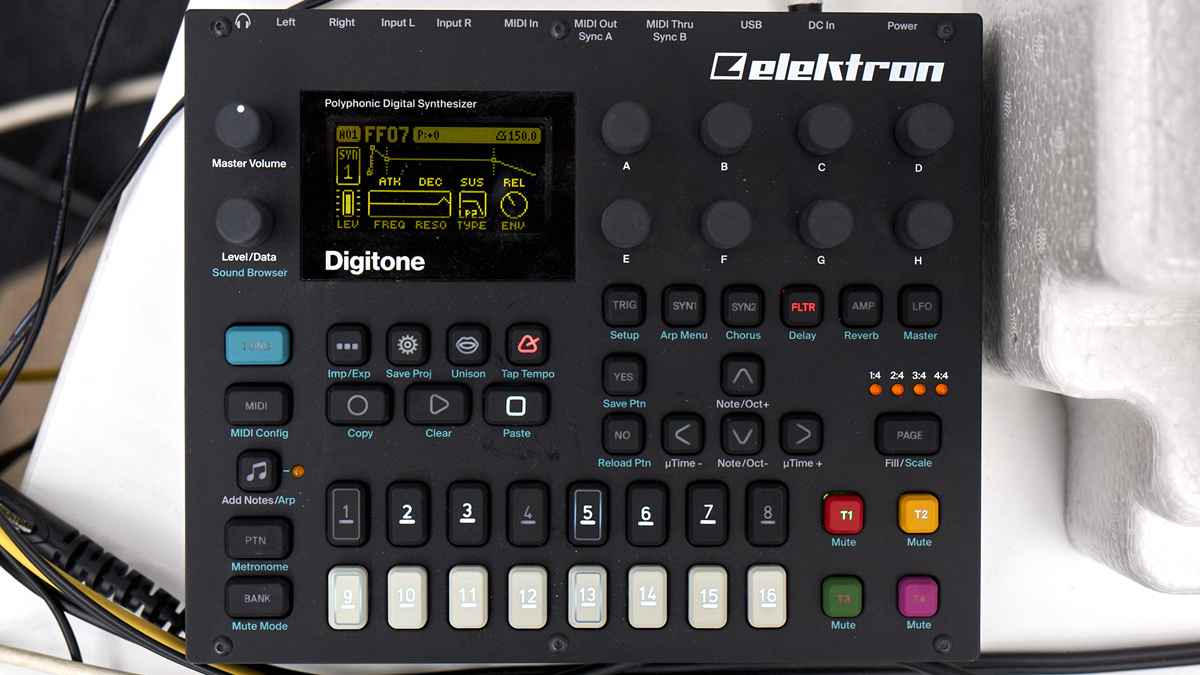
Are there artists operating in the realm of sound design who influenced you?
“I’m really interested in Mark Fell as a producer, artist and thinker. He has a really interesting perspective in that he makes music that sounds interesting to him and doesn’t care whether it’s strictly suited to a club or an art gallery. Although he’s clearly listened to a lot of club music and knows how those structures work to keep people dancing, he has his own take that I find endlessly inspiring.”
Not making music for a specific category must be liberating but quite a brave step to take?
“It is quite brave I suppose, or naïve because you’ve got to try and make a living [laughs]. It’s not about making something weird for the sake of it or a big statement about producing experimental music. It would be a bit disingenuous if I started making a certain type of techno music, for example, because I don’t know about that style of music in any real depth. It’s just about trying to find what the sum of all your weird influences is.”
What environment best suits Workaround?
“If it fits anywhere it’s probably club music. There have always been producers in club music doing their own weird thing – taking what they like about that scene and adopting a minimal or experimental approach. Over the last ten years in the UK and Europe, a lot of artists have been playing with those formulas and doing weird things with kick drums or timing.
“I can find a lot of what I’m interested in in Lee Gamble’s music. He’s an original Junglist, but makes a weird version of it.”
The album has a certain consistency, not just in terms of the vibe but the sounds used. Did you deliberately restrict your sound palette?
“Yes, definitely. When you switch on your computer, for the first ten minutes you’re buzzing and then you realise there are too many options and hit a wall. It’s crazy that you can do anything, and that’s what gives you the headache. I’ll usually say, three colours, go… any constraint to get me going. Then you get really attached to those few elements and look to do more with them rather than piling on elements. I like people who do a lot with a few elements.”
“When you switch on your computer, for the first ten minutes you’re buzzing and then you realise there are too many options and hit a wall.”
Does that primarily apply to working in the box?
“I use Logic and have set templates with a few sample banks that I know really well from things I’ve made in the past. Logic’s always been my choice of DAW, mainly because it’s the first one I used.
“I use Ableton for live and wish I was better on it because I can see how it’s much more flexible, especially for making arrangement decisions.”
The music sounds very fluid despite the grid…
“I sometimes wish I didn’t use Logic simply because it is quite gridded [we spoke to Beatrice before the release of Logic Pro X 10.5]. I’d love to get onto Max/MSP because it’s non-linear and gets you out of that thing where you’re conscious of being a certain amount of bars into a track. It makes you listen to music in a different way. I’ve been trying to learn it, but I don’t have the weeks and hours needed at the moment.”
In order to move forward, is it essential to learn new technologies?
“Well, saying you can’t do something can also be quite a good distraction technique - you can make something amazing with one drum machine if you have the discipline.
“There are so many examples of people being creative with electronic limitations. Lee Perry is an obvious example. All he needs is a spring reverb, a vocal and a drum machine to make some of the best music you’ve ever heard.”
Is that a good principle to abide by for anyone taking their first steps into production?
“It’s definitely fun to buy gear and I don’t pass judgement on anybody who wants to buy loads of stuff. If you’ve got the money, why not, but it’s easy to think that’s your concern. Your concern should be getting what you want to say out, not fiddling around looking at gear on eBay all day - as tempting as that is.”
Indeed, the title Workaround seems related to self-imposed limitations?
“Yes it is - you’re the first person to pick up on that. It’s no more complicated than the process behind how I made the album.”
The beats have a sort of Afro-Caribbean tinge and I wondered whether these were sampled from those types of instruments?
“A lot of it is based on samples coming from the Mutable Instruments module Clouds. I guess most people use it for granular synthesis, but somebody made some firmware that you can download and replay through it so you can basically turn it into a resonator.
“You send things in and out comes this strange, resonated re-pitched version. I realised I could send drum patterns into it and these melodies would come that I could then move about. When I worked out how to do that it was really exciting, so any sounds on the record that are not obvious drum samples are probably resonated, pitched samples from Clouds that I turned into percussion - making my own sample pack, in effect.”
You also invited a lot of collaborators to sample sounds from…
“There’s a lot of collaborators on the record, but it’s completely fictitious in terms of me not needing to be in the same room with a bunch of musicians. I basically made two demo tracks at 150bpm and invited people to play all sorts of different takes on those two tracks. When I got the material in from everybody, I got rid of the backing tracks and had loads of material that I could then cut up and make new music out of.
“At times, the record might sound like people in a room playing along to something, but they’re not. Again, it goes back to that collage thing where I’m looking to rejig everything in a way that electronic music gives you that freedom to do.”
Did you want those sounds to stay acoustic or develop them into something more interesting?
“Maybe, or maybe it’s just to make weird connections with things, which could be a complete disaster and sound horrible or be quite interesting.
“I remember hearing a programme on Radio 2 when I was ten or 11 describing how a Motown hit was produced. I thought it was amazing to hear somebody talking through all of the elements. It filled my imagination because you can feel really empowered when somebody walks you through the construction of a track. I suppose I’m as interested in how records get made as making music.”
The electronic sounds/samples are very delicately syncopated. Was that the case or does the music belie a more improvised approach to its construction?
“There is a lot of pushing blocks of audio around the screen. Sometimes I think it would be amazing to be able to play an instrument in real time and get lost in that, but I’ve learnt things the other way round. So yes, the music’s quite meticulously arranged. Hopefully the jigsaw puzzle flows and it doesn’t sound like a maths lesson [laughs].”
The melody comes from the percussion rather than traditional synth lines?
“My fixation is rhythm, basslines and the textures around those things. If I ever have any money I don’t go out and buy a synth, I’ll buy a drum machine and that informs the shape of the album.
“The live set is the record with all the acoustic bits stripped out and replaced by synths, so it’s a completely different entity. It’s like a compressed version of the record, with the rhythms pushed up front and made for a club sound system where you can get that fantastic range of frequencies.”
Do you take your hardware out on the road?
“I don’t use any of my studio gear live; I run it off my laptop and make arrangement and processing decisions. At some point I want to use some of my studio sequencers on stage, but I need to write the music first or at least get some ideas together for doing that.”
You mentioned earlier that you fixed the tempo to 150bpm throughout the album…
“I did some tracks a few years ago at 150bpm out of complete frustration. If you’re doing 4/4 music it’s usually got a vibe and emotion to it, but if you’re playing around with kick drums in weird places and don’t have a solid beat I find the music can seem quite slow because there’s nothing driving it forward. House music is generally 120-125bpm and jungle is around 170, but 150bpm leaves a lot of space for perceived slowness or fastness.”
You have a modest modular setup…
“I find the whole modular synth thing a real turn off in terms of how excessive it can get and the idea that whoever has the most gear has better ideas - I don’t think that’s true. I bought two Grids modules and Clouds and they’re both all over the album. People will argue against it, but it’s nothing you can’t do inside the computer - I just found it really nice to get hands on and away from the screen. The Vermona module is a junction box/audio interface that allows me to sync the modular rack to the computer.”
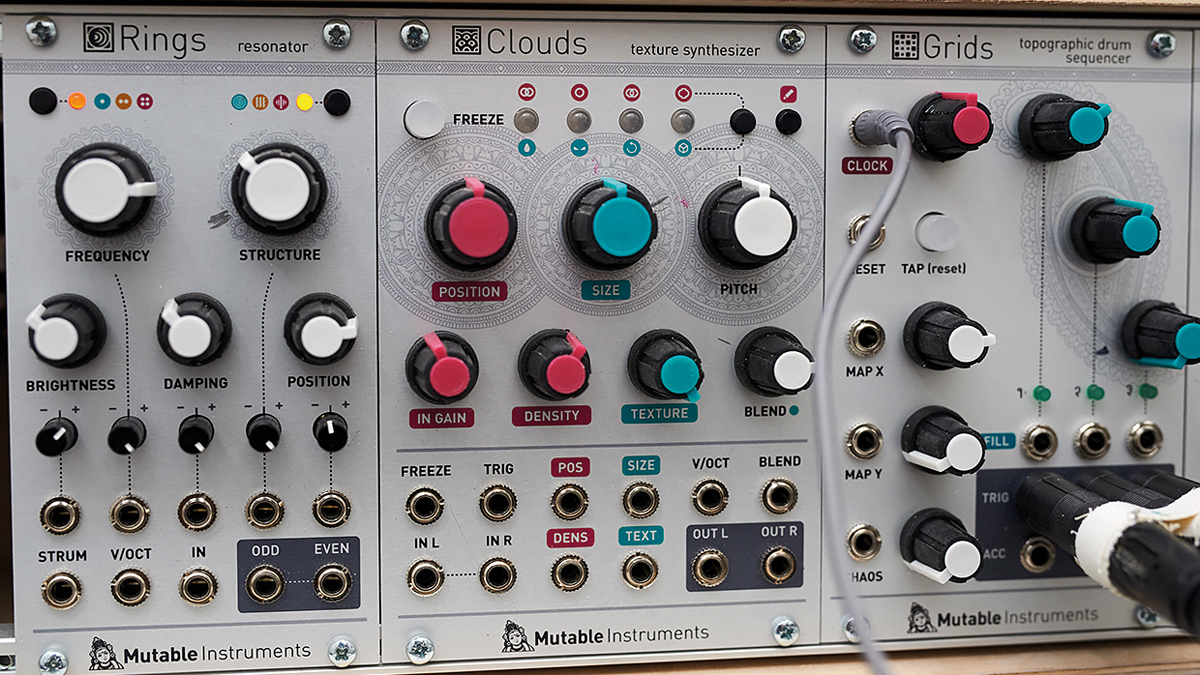
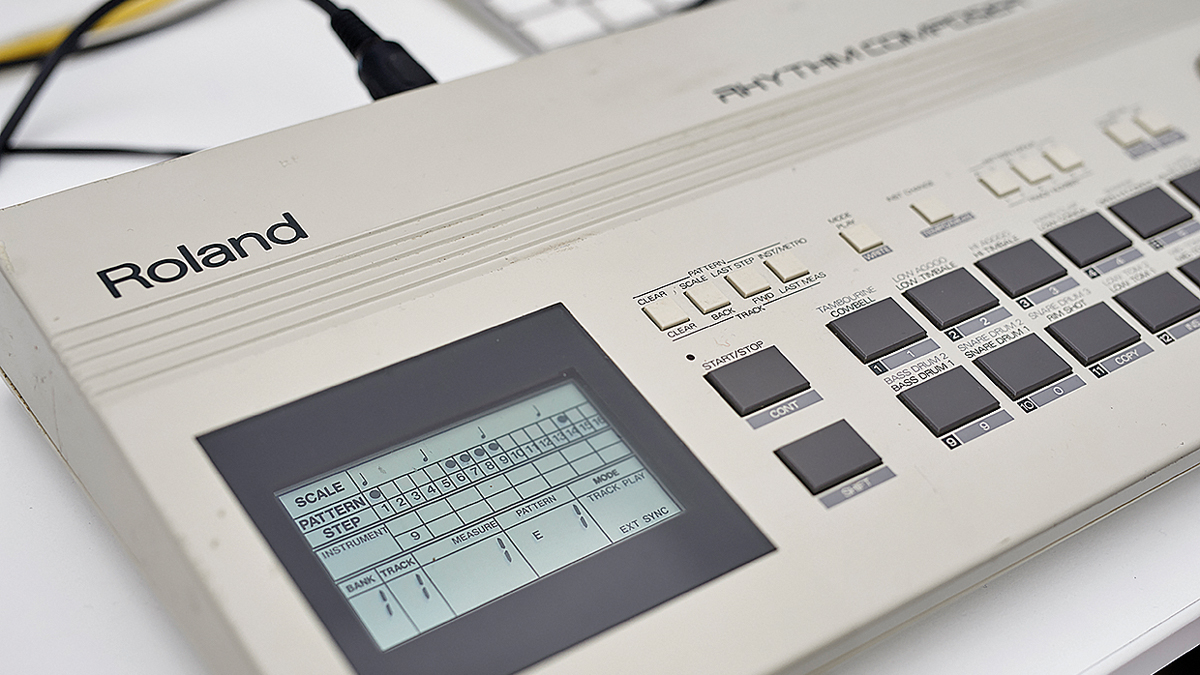
What do you get out of using Grids?
“It’s a sequencer, but rather than the Roland TR-26 step sequencer I have, and all the cousins of that drum machine where you’re always thinking about rhythm in 16-step sequences, this is a completely different approach.
“There’s no linear sequencer laid out for you visually; it’s just a bank of pre-recorded drum rhythms. You can swerve between one rhythm and another on the X and Y axis, which means you’re shifting the bias, accent or swing of a rhythm.
“There are three ring dials, so if you imagine them as a kick drum, snare and hi-hat, you can basically dial in the density and send it to a drum machine. If you think of the harmonic variation quantities you have in the three dials, which go from 0 to 250bpm, you’ve got an incredible amount of intervals of rhythm, so it’s brilliant to play with.”
Grids is triggering your Nord Drum 2?
“The Grids sequencer sends a trigger out into the Nord Drum 2, which is a really nice digital FM synth for percussive sounds. It’s got everything from incredibly icy, metallic sounds to 808-type beats. It’s just a way of coming up with some interesting drum patterns, and within the Nord Drum there are endless parameters for shaping a sound. I think they’ll both be in the live set eventually.”
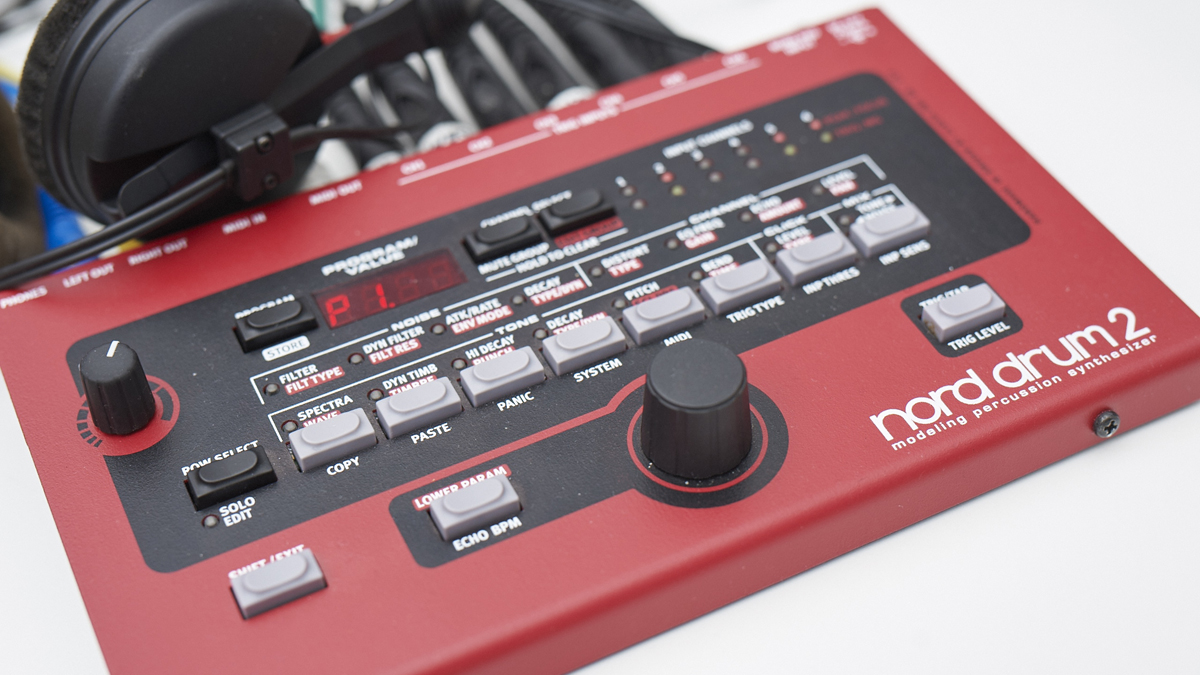
You also have the Zularic Repetitor, which is another rhythm-based module?
“That’s another sequencer that works on a similar principle to Grids. There’s a brain behind the panel stored up with loads of drum patterns. Again, the dials help you to swerve between patterns, but if Grids is loaded up with common western drum patterns, the Zularic Repetitor is pre-programmed with African and Indian polyrhythms.
“I’m not someone who understands the complexity behind these modules; I’ve just worked out my own way of using them. I’d love to do live sets with these because sequencing in real time is so exciting.”
But a little scary I expect?
“Totally, because every day would be different and it’s the opposite of the computer where everything is controllable. These modules take you on a wild ride and you don’t know where you’re going, which is probably why people are obsessed with them. I think you have to give them strict parameters for live work, and because of the way I make music it wouldn’t represent the album because it wasn’t made with improvisation in mind. That would have to be a separate project.”
With the addition of the Vermona DRM-1 modular, you seem to have almost every drum tweaking option you could ever want?
“It’s a mad one that. I actually bought it quite a long time ago for a sound art-type commission and used some of the fee to buy it. The Vermona’s interesting because there’s no in-built sequencer; it’s just a sound source. I use it with Grids because it’s got six trigger inputs or more and each row is an instrument. For example, the top row is the kick and you have all the parameters to shape that sound. There are so many variations that you could do a whole live set using just that drum machine.”
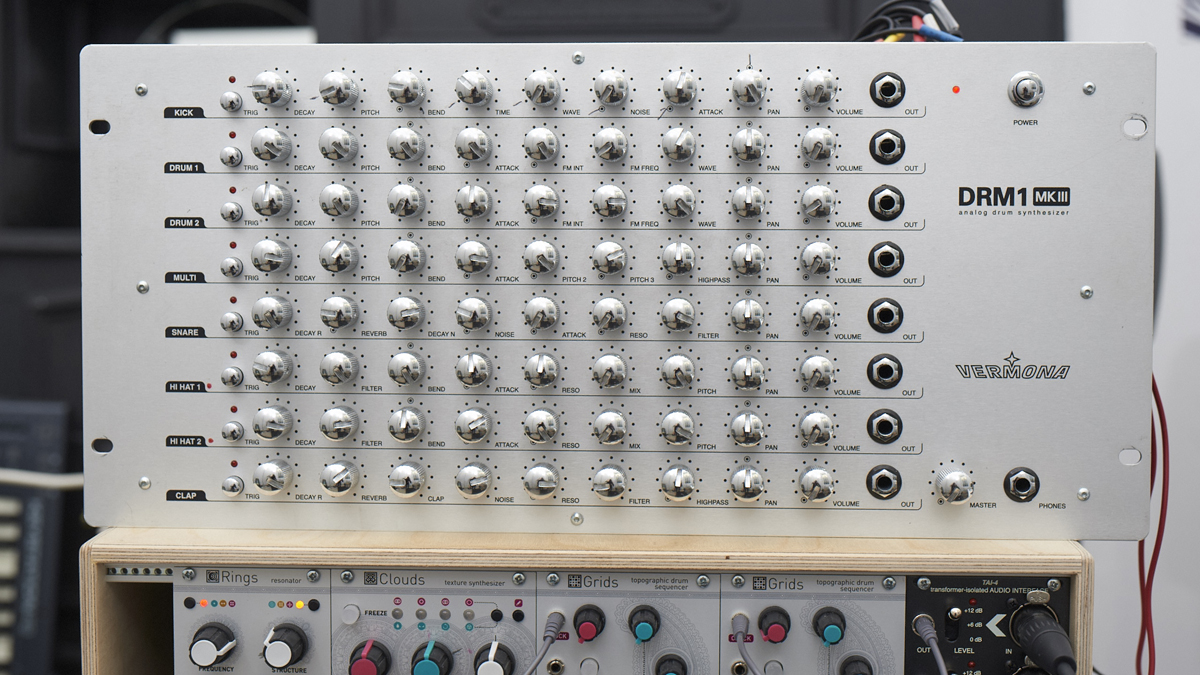
Should we give more credit to these machines for directing our creativity?
“What’s exciting about this technology is that while you half know what you’re doing, the other half is the instrument shaping your ideas. Mark Fell talks a lot about people who say they have an idea, know exactly what they want and sit down and do it, but that’s not really true because you’ll have an idea about what something might sound like but you’re navigating in collaboration with the machine.”
You said that this music could all be done in the box, but presumably there’s less post-production required using a modular setup?
“I think that’s down to taste really. I love records and CDs and they both have their own quality, or maybe I don’t know enough about sound to think they’re different or one is better than the other. I’m sure there are people who really know what they’re doing and can monitor the difference, and I’d trust their judgement over mine, but I’m not an audiophile.
“I care about the sound deeply, but I’ll use what I can within the limitations I have. If you’re going to listen to music on a laptop, what’s the point? I find myself playing a Villalobos track on a laptop and thinking, this is stupid - I’m losing all of what he’s got to say. It’s questionable what people are going to get from your painstaking tweaking of sounds, but then you have people walking around with Beats by Dre headphones which are insanely bassy.”
“Your concern should be getting what you want to say out, not fiddling around looking at gear on eBay all day”
Is your DAW complemented by any software plugins?
“Chromaphone is an interesting plugin; it’s based on physical modelling synthesis. I use it to make drum sounds.
“If you stand at a piano and record every single angle you can build a comprehensive sample pack, but each sound is fixed even if you can shape it. The way I understand physical modelling synthesis is you can literally mimic the physical properties of a three-dimensional object.
“For example, we could take a glass and build it into an instrument by programming its dimensions and the material it’s made from. It’s like designing a sound-resonating chamber and the sound design options are infinite compared to a sample library where you’re dealing with just one sound and only adding a filter or reverb. You could use Chromaphone to recreate the sound of a harp or a piano, but why not use the real thing? It’s great for taking things to extremes and endless fun to use.
“Other than that, I use some Native Instruments software like Prism and Battery, and I’ve recently been looking into using Reaktor and Razor.”
You were quoted as saying “The computer always wins”. What did you mean by that?
“When I knew that I wanted to make a record from electronic and acoustic instruments, I thought it might sound a bit cheesy. I didn’t want to go off on some symphonic tangent - I wanted to make electronic music with guest components. I love how the computer can be quite dry, sober and rigid. The computer always wins was my way of saying to myself, don’t go off on an acoustic tangent. The new material I’m working on is a completely different shape to Workaround - it’s all solo stuff. No collaborations, just me and this room.”


Future Music is the number one magazine for today's producers. Packed with technique and technology we'll help you make great new music. All-access artist interviews, in-depth gear reviews, essential production tutorials and much more. Every marvellous monthly edition features reliable reviews of the latest and greatest hardware and software technology and techniques, unparalleled advice, in-depth interviews, sensational free samples and so much more to improve the experience and outcome of your music-making.
